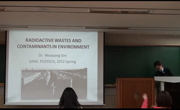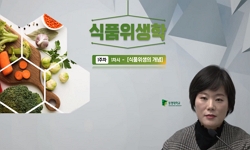본 연구에서는 영ㆍ유아용 조제식의 안전성에 대한 소비자의 신뢰도를 회복하고 영ㆍ유아의 성장 및 발달에 도움이 되고자 우리나라, CODEX, EU, 호주 및 뉴질랜드의 영ㆍ유아용 조제식내 식...
http://chineseinput.net/에서 pinyin(병음)방식으로 중국어를 변환할 수 있습니다.
변환된 중국어를 복사하여 사용하시면 됩니다.
- 中文 을 입력하시려면 zhongwen을 입력하시고 space를누르시면됩니다.
- 北京 을 입력하시려면 beijing을 입력하시고 space를 누르시면 됩니다.
https://www.riss.kr/link?id=A76346324
- 저자
- 발행기관
- 학술지명
- 권호사항
-
발행연도
2008
-
작성언어
Korean
- 주제어
-
등재정보
KCI등재,SCOPUS
-
자료형태
학술저널
- 발행기관 URL
-
수록면
1214-1221(8쪽)
-
KCI 피인용횟수
2
- 제공처
- 소장기관
-
0
상세조회 -
0
다운로드
부가정보
국문 초록 (Abstract)
본 연구에서는 영ㆍ유아용 조제식의 안전성에 대한 소비자의 신뢰도를 회복하고 영ㆍ유아의 성장 및 발달에 도움이 되고자 우리나라, CODEX, EU, 호주 및 뉴질랜드의 영ㆍ유아용 조제식내 식품첨가물 및 오염물질 기준을 비교ㆍ분석하고 국내 영ㆍ유아용 조제식 기준의 문제점과 개선방안을 다음과 같이 제시하였다. 영ㆍ유아용 조제식내 식품첨가물 기준은 영양품질 개선을 목적으로 하는 영양 강화제와 식품에 첨가물 용도로 사용되는 식품첨가물로 분류하여 비교하였다. 영양 강화제의 경우 CODEX, EU, 호주 및 뉴질랜드에서는 영양소 유형에 따라 분류하여 제시한 반면, 우리나라에서는 영양 강화제의 명칭을 종합적으로 나열하여 제시하였다. 따라서 우리나라에서도 영양 강화제에 대하여 영양소별로 구분하여 제시할 필요성이 제기된다. 또한 첨가물 용도로 사용되는 식품첨가물의 경우 국내에서는 허용량이 규정되어 있지 않으므로 허용 식품첨가물의 명칭 및 최대 허용량을 제시하여 국제 기준과의 조화를 고려하도록 한다. 오염물질 기준의 경우 국내에서는 일부 위해 미생물(E. sakazakii, B. cereus)과 방사선 조사처리 기준만 설정되어 있으나, CODEX 및 EU는 농약 기준을, 호주 및 뉴질랜드는 위해 미생물(Staphylococcus aureus, Salmonella sp.)과 중금속중 납과 알루미늄의 최대 허용량에 대한 허용기준을 추가로 규정하고 있다. 따라서 우리나라 영ㆍ유아용 조제식의 안전성을 입증할 수 있는 과학적인 자료를 토대로 위해 미생물, 농약 및 기타 오염물질 기준을 정량적으로 추가 제시할 필요성이 제기된다.
다국어 초록 (Multilingual Abstract)
The aim of this study is to propose suggestions for establishing Korean regulatory standards of infant formula. Accordingly, the regulatory standards for food contaminants and additives in Korean infant formulas were compared and analyzed with those i...
The aim of this study is to propose suggestions for establishing Korean regulatory standards of infant formula. Accordingly, the regulatory standards for food contaminants and additives in Korean infant formulas were compared and analyzed with those in CODEX, EU, Australia and New Zealand. Several suggestions for regulations were found from different countries. Firstly, it is advisable that additives for nutrient supplement of infant formula be classified as types of nutrients. Secondly, it is proposed that guidelines should be set on the maximum amount of additives in infant formula. Thirdly, pathogens such as Staphylococci and Salmonella of infant formula should be regulated. Finally, present regulations need to establish the maximum permissible levels of some pesticides, Pb and Al, that other countries are already regulating. These proposed recommendations would broaden the scope of infant formula regulatory standards needed for infants' health.
참고문헌 (Reference)
1 박건상, "한국의 식품중 농약 잔류허용기준 설정" 한국농약과학회 9 (9): 51-59, 2005
2 김희섭, "영유아식을 위한 조리과학적 접근" 한국식품조리과학회 19 (19): 794-805, 2003
3 Health Canada, "Trace Metal Analysis-Infant Formula"
4 Lim JH, "Studies on the contamination and inhibition of Bacillus cereus in domestic raw milk and milk products" 42 : 215-222, 2000
5 Kwon KS, "Risk assessment and prevention of pathogenic microorganisms in powdered infant formula" 39 : 24-29, 2006
6 CODEX, "Recommended international code of hygienic practice for foods for infants and children. CAC/RCP 21-1979"
7 Shaheen R, "Potential of selected infant food formulas for production of Bacillus cereus emetic toxin, cereulide" 107 : 287-294, 2006
8 National Research Council, "Pesticides in the diets of infants and children" National Academy of Sciences 1993
9 Cressey PJ, "Pesticide content of infant formulae and weaning foods available in New Zealand" 20 : 57-64, 2003
10 EFSA, "Opinion of the scientific panel on biological hazards on the request from the Commission related to the microbiological risks in infant formulae and follow-on formulae" 113 : 1-34, 2004
1 박건상, "한국의 식품중 농약 잔류허용기준 설정" 한국농약과학회 9 (9): 51-59, 2005
2 김희섭, "영유아식을 위한 조리과학적 접근" 한국식품조리과학회 19 (19): 794-805, 2003
3 Health Canada, "Trace Metal Analysis-Infant Formula"
4 Lim JH, "Studies on the contamination and inhibition of Bacillus cereus in domestic raw milk and milk products" 42 : 215-222, 2000
5 Kwon KS, "Risk assessment and prevention of pathogenic microorganisms in powdered infant formula" 39 : 24-29, 2006
6 CODEX, "Recommended international code of hygienic practice for foods for infants and children. CAC/RCP 21-1979"
7 Shaheen R, "Potential of selected infant food formulas for production of Bacillus cereus emetic toxin, cereulide" 107 : 287-294, 2006
8 National Research Council, "Pesticides in the diets of infants and children" National Academy of Sciences 1993
9 Cressey PJ, "Pesticide content of infant formulae and weaning foods available in New Zealand" 20 : 57-64, 2003
10 EFSA, "Opinion of the scientific panel on biological hazards on the request from the Commission related to the microbiological risks in infant formulae and follow-on formulae" 113 : 1-34, 2004
11 Choi SH, "Microbiological safety of infant formula and baby food" 23 : 65-71, 1997
12 Kwon GS, "Micobiological risk assessment and prevention plan of infant formula. Enterobacter sakazakii management of infant formula" 25-47, 2006
13 Rowan NJ, "Maltodextrin stimulates growth of Bacillus cereus and synthesis of diarrhea enterotoxin in infant milk formulae" 63 : 1182-1184, 1997
14 KFDA, "MRLs for Pesticides in Foods" Korea Food and Drug Administration 2005
15 KFDA, "Korea Food Code" Korea Food and Drug Administration 2008
16 KFDA, "Korea Food Additives Code" Korea Food and Drug Administration 2006
17 Mi Kyung Yoo, "Isolation and Genotyping of Enterobacter sakazakii from Powdered Infant Formula Manufactured in Korea" 한국식품과학회 14 (14): 875-877, 2005
18 Drudy D, "Enterobacter sakazakii: An emerging pathogen in powdered infant formula" 42 : 996-1000, 2006
19 CDC, "Enterobacter sakazakii infections associated with the use of powdered infant formula-Tennessee" 51 : 297-300, 2002
20 WHO, "Enterobacter sakazakii and other microorganisms in powdered infant formula"
21 CODEX, "Draft revised standard for infant formula and formulas for special medical purpose intended for infants" 46-63, 2006
22 Kim AJ, "Development of food program for infant" 10 : 147-166, 2003
23 Jin HS, "Development of Korean dairy industry-infant formula" 23 : 155-160, 2005
24 Lee MG, "Comparison between use levels of food additives by Codex and Korea" 21 : 14-22, 2006
25 EU, "Commission regulation (EC) No 2073/2005 on mi-crobiological criteria for foodstuffs"
26 EU, "Commission Directive 95/2/EC on food additives other than colours and sweeteners"
27 EU, "Commission Directive 2006/52/EC on food additives other than colours"
28 EU, "Commission Directive 2003/14/EC on infant formulae and follow-on formulae"
29 EU, "Commission Directive 2003/114/EC on food additives other than colours and sweeteners"
30 CODEX, "CODEX Standard for infant formula. CODEX STAN 72-1981"
31 "Australia and New Zealand. Standard 1.6.1 Microbiological limits for fo"
32 "Australia and New Zealand. Standard 1.3.1 Food additives"
33 CODEX, "Advisory lists of mineral salts and vitamin compounds for use in foods for infants and children. CAC/GL 10-1979 (amended 1983, 1991)"
34 Simon RA, "Adverse reactions to food additives. In Food Safety: Contaminants and Toxins" D'Mello J.P.F. CAB International 235-, 2003
동일학술지(권/호) 다른 논문
-
LPS 주사한 BALB/c 마우스에서 Genistein의 산화적 스트레스 억제효과 및 항염증 효과
- 한국식품영양과학회
- 조혜연(Hye-Yeon Cho)
- 2008
- KCI등재,SCOPUS
-
자외선 조사 무모쥐 피부조직에 도포한 애엽(Mugwort) 추출물의 주름개선 효과
- 한국식품영양과학회
- 박시향(Si-Hyang Park)
- 2008
- KCI등재,SCOPUS
-
- 한국식품영양과학회
- 신길만(Gil Man Shin)
- 2008
- KCI등재,SCOPUS
-
- 한국식품영양과학회
- 신길만(Gil Man Shin)
- 2008
- KCI등재,SCOPUS
분석정보
인용정보 인용지수 설명보기
학술지 이력
| 연월일 | 이력구분 | 이력상세 | 등재구분 |
|---|---|---|---|
| 2023 | 평가예정 | 해외DB학술지평가 신청대상 (해외등재 학술지 평가) | |
| 2020-01-01 | 평가 | 등재학술지 유지 (해외등재 학술지 평가) |  |
| 2014-06-24 | 학회명변경 | 한글명 : 한국식품영양과학회지 -> 한국식품영양과학회영문명 : Journal of the Korean Society of Food Science and Nutrition -> The Korean Society of Food Science and Nutrition |  |
| 2014-04-02 | 학회명변경 | 한글명 : 한국식품영양과학회 -> 한국식품영양과학회지영문명 : 미등록 -> Journal of the Korean Society of Food Science and Nutrition |  |
| 2011-01-01 | 평가 | 등재학술지 유지 (등재유지) |  |
| 2009-01-01 | 평가 | 등재학술지 유지 (등재유지) |  |
| 2007-01-01 | 평가 | 등재학술지 유지 (등재유지) |  |
| 2005-01-01 | 평가 | 등재학술지 유지 (등재유지) |  |
| 2002-07-01 | 평가 | 등재학술지 선정 (등재후보2차) |  |
| 2000-01-01 | 평가 | 등재후보학술지 선정 (신규평가) |  |
학술지 인용정보
| 기준연도 | WOS-KCI 통합IF(2년) | KCIF(2년) | KCIF(3년) |
|---|---|---|---|
| 2016 | 1.03 | 1.03 | 1.13 |
| KCIF(4년) | KCIF(5년) | 중심성지수(3년) | 즉시성지수 |
| 1.18 | 1.2 | 1.993 | 0.21 |





 ScienceON
ScienceON DBpia
DBpia







